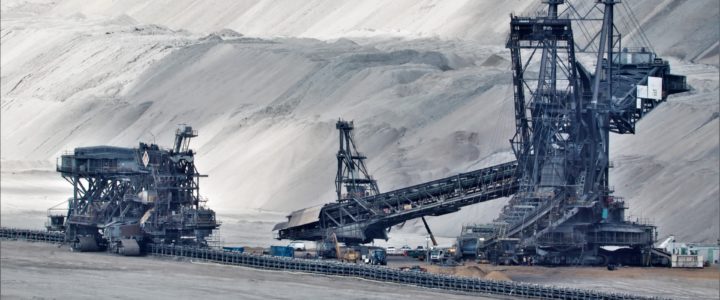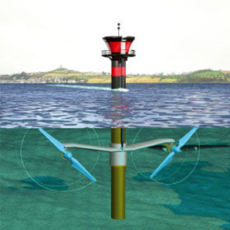
Fossil fuels are the most used energy source on the planet. They are also far and away the least efficient. It may surprise some to find out that fossil fuels are, in the strictest sense of the word, a “renewable” energy, but they are not classified beside wind and solar because of the enormous amount of time it takes to replenish itself. Fossil fuels will naturally renew their stock, but it will take hundreds of millions of years and, quite frankly, humans don’t have that time to waste.
Well, maybe they do. The sun is estimated to end life on Earth in five billion years time, so when the current supply of fossil fuels runs dry in 2088, people can go back to living in caves and commit to a nomadic lifestyle for approximately a half billion years until the next batch of fossil fuels is ripe for the drilling. At that point, it may be a good idea to explore other real estate in the galaxy as it’s generally not recommended to procrastinate until the last billion or so years. It’s important not to hold a grudge against the sun for unceremoniously booting humanity off this planet. The sun has been and will continue to conspire in mankind’s favor by making it possible to take that giant leap. Fossil fuels are, after all, simply glorified solar energy wrapped in organic packaging.
Petroleum, coal and natural gas tend to come from the fossilization of either plant matter or from single-celled organisms that collected in extraordinarily large quantities on the bottom of the ocean floor. Both of these organic life forms absorbed the sun’s energy through a process called photosynthesis and, so, the burning of fossil fuels is just a way to release the trapped energy which originated from the sun. Some may wag a “hold your horses!” finger and point it to oil derived from good ol’ dinosaur bones, but experts agree that this only represents a tiny fraction of the action. Even then, dinosaurs ate plants or ate other animals that ate plants, so whether it’s once, twice or thrice removed, it all traces back to a giant fireball floating almost 93 million miles away from home.
Due to a combination of necessity and human ingenuity, in recent decades technology has made it possible to bypass the middle-man and harness the sun’s energy directly. This technology is called solar panels, and though it may seem that it’s the best course of action considering its sustainability and lack of pollution, there are more factors at play. Currently, fossil fuels provide over 80% of the world’s energy and, barring anything unforeseen, experts agree that this dominance will remain steady over the next two decades when, in 2040, its share will fall only slightly to 76%. There are two caveats that may derail this train: innovation and regulation.
In an interesting twist of fate that proves good material for a case study, coal’s popularity has fallen drastically in recent years. The coal industry has seen between a 30% and 60% decrease in business globally in the past few years. This has devastated the industry, so much so that three of the top four coal production companies in the United States declared bankruptcy after they saw their combined market values fall from $33 billion to $150 million. This drastic swing can partly be chalked up to legislation that curbed the expansion of coal. Chief among them is the Clean Air Act of 1970, which put more stringent demands on coal factories to produce less carbon emissions. Older factories were exempt from the new requirements (a process called “grandfathering”) so many companies opted to keep older factories running way past their best-by date. The outdated technology made it more expensive to run than newer factories, but when all was said and done, the bottom line looked more attractive with the crotchety old factories still chugging out coal.
 Right around 2015, these factories began to retire, all at once, creating quite a scene. It’s important to remember the role that coal plays in the American imagination. For generations, coal has come to represent the indomitable urge to explore and expand, to blaze a trail through the untouched wilderness, roughly, brazenly and by sheer force of will, like those iconic iron behemoths, the steam engines, which blew tufts of black clouds wherever it conquered. So when coal plants began to close without any plans of replacing them, and when 58 thousand hard-working, salt of the earth coal miners lost their jobs, the issue became politicized and came to represent a larger argument regarding disenfranchised groups in America. Current president Donald Trump leveled blame on more stringent regulations put in place by his predecessor, Barack Obama. An independent assessment, however, found that Obama era regulations account for only 5% of the decline in coal’s preeminence; the knife in the back came from coal’s own bedfellow.
Right around 2015, these factories began to retire, all at once, creating quite a scene. It’s important to remember the role that coal plays in the American imagination. For generations, coal has come to represent the indomitable urge to explore and expand, to blaze a trail through the untouched wilderness, roughly, brazenly and by sheer force of will, like those iconic iron behemoths, the steam engines, which blew tufts of black clouds wherever it conquered. So when coal plants began to close without any plans of replacing them, and when 58 thousand hard-working, salt of the earth coal miners lost their jobs, the issue became politicized and came to represent a larger argument regarding disenfranchised groups in America. Current president Donald Trump leveled blame on more stringent regulations put in place by his predecessor, Barack Obama. An independent assessment, however, found that Obama era regulations account for only 5% of the decline in coal’s preeminence; the knife in the back came from coal’s own bedfellow.
Hydraulic fracturing, or “fracking” as it’s more commonly known, has revolutionized the natural gas industry. Though not without significant environmental concerns, fracking has been celebrated for dropping the price of natural gas so that it is now a more economically feasible option than coal. Indeed, the federal Energy Information Agency predicts that natural gas will account for 37% of this year’s summer electricity demand, while coal has officially stepped down from it’s throne with only a 30% market share. Though fracking has a bevy of serious environmental concerns attached to the process, natural gas produces about 50% less carbon dioxide emissions than coal. It’s been a nice ride for coal, and its contributions to the development of civilization have been truly invaluable, but barring any innovations that make coal mining more economically feasible, or government regulations that incentivize consumers to start shoveling coal into their furnace, it does seem that death knell is about to sound for this particular fossil fuel.
If you’re inspired by the logical progression from coal to natural gas, join the bandwagon by embracing another no-brainer. If you’ve still got fluorescent bulbs in your sockets, you aren’t doing anybody any favors. LED’s are the way to be! Not only does it significantly reduce carbon emissions, but it also saves you money. One study found that while a fluorescent bulb expends 60 watts of electricity, an LED bulb will use only 12.5 watts.


